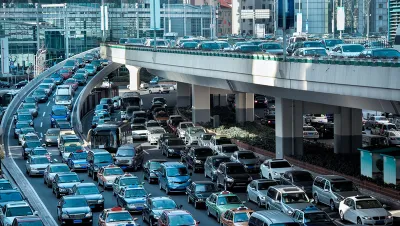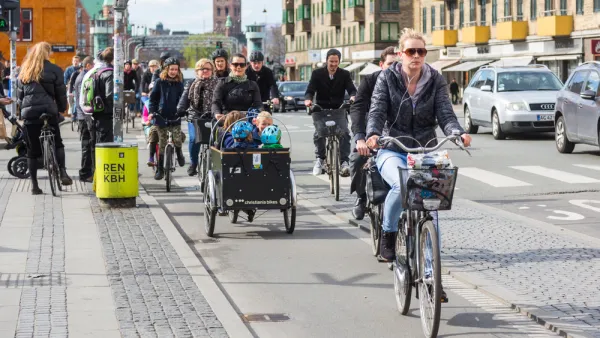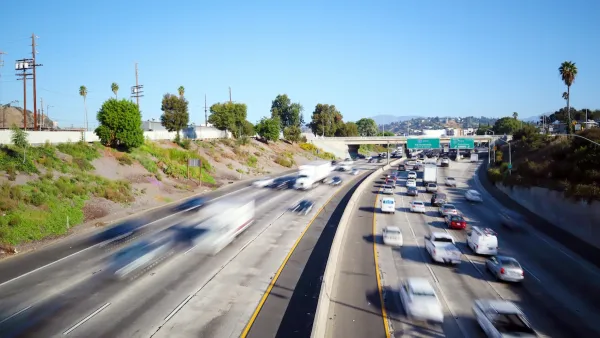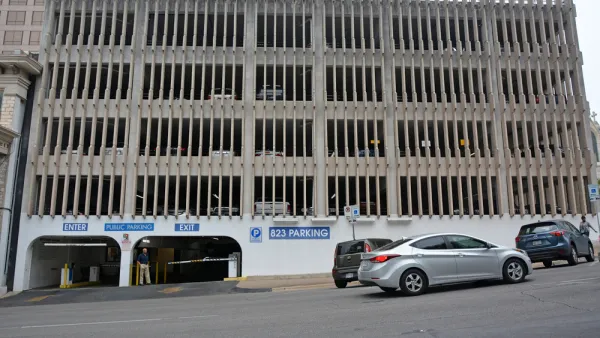Commute times vary significantly depending on race, according to a recent study. The consequences of the imbalance have very real social and economic effects for already marginalized racial groups.

The Federal Reserve Bank of Philadelphia recently published a working paper documenting the racialized differences in commuting from 1989 to 2019. Researchers from the Massachusetts Institute of Technology, the University of Pennsylvania, the University of Connecticut, and the Federal Reserve Bank of Philadelphia Research Department complete the study by examining Census and American Community Survey data to document Americans’ increasing car dependence, focusing on how that trend has varied depending on racial demographics over the course of the past four decades.
As article by Kea Wilson for Streetsblog USA shares news about the report, calling attention to the drawbacks of car ownership for Black Americans:
As previous research has shown, Black commuters in the U.S. have pretty much always had the longest commutes of any group, averaging 26 minutes each way back in 1980 when census-takers first began asking U.S. residents how long it took them to get to to work. That was five minutes longer than their White counterparts’ average journeys to work that year, or about 50 lost minutes every single week — a difference that the researchers attribute in large part to the fact that Black road users were (and still are) significantly more likely to rely on shared and active modes, neither of which are given the resources necessary to get people where they need to go conveniently.
While the difference might seem insignificant, Wilson cites a 2017 study from the University of West Bristol that quantifies the very real impacts of commute length on quality of life. Every minutes, as it turns out, makes a difference.
The article also examines what the Federal Reserve’s study indicates about needed policy reforms. “At least at first glance, that might seem like a good argument for subsidizing private vehicle ownership among Black commuters, as some non-profits have done for low-income families, sometimes to positive effect,” writes Wilson before noting the ongoing housing affordability challenges driving the trends. “[U]nless big cities end housing and employment segregation, no amount of driving subsidy can meaningfully speed up Black workers’ commutes, even if we can someday close the gap among workers’ driving times by sticking everyone in giant traffic jams.”
FULL STORY: Study: Car Ownership Doesn’t Always Cut Black Workers’ Commutes

National Parks Layoffs Will Cause Communities to Lose Billions
Thousands of essential park workers were laid off this week, just before the busy spring break season.

Retro-silient?: America’s First “Eco-burb,” The Woodlands Turns 50
A master-planned community north of Houston offers lessons on green infrastructure and resilient design, but falls short of its founder’s lofty affordability and walkability goals.

Delivering for America Plan Will Downgrade Mail Service in at Least 49.5 Percent of Zip Codes
Republican and Democrat lawmakers criticize the plan for its disproportionate negative impact on rural communities.

Test News Post 1
This is a summary

Test News Headline 46
Test for the image on the front page.

Balancing Bombs and Butterflies: How the National Guard Protects a Rare Species
The National Guard at Fort Indiantown Gap uses GIS technology and land management strategies to balance military training with conservation efforts, ensuring the survival of the rare eastern regal fritillary butterfly.
Urban Design for Planners 1: Software Tools
This six-course series explores essential urban design concepts using open source software and equips planners with the tools they need to participate fully in the urban design process.
Planning for Universal Design
Learn the tools for implementing Universal Design in planning regulations.
EMC Planning Group, Inc.
Planetizen
Planetizen
Mpact (formerly Rail~Volution)
Great Falls Development Authority, Inc.
HUDs Office of Policy Development and Research
NYU Wagner Graduate School of Public Service





























